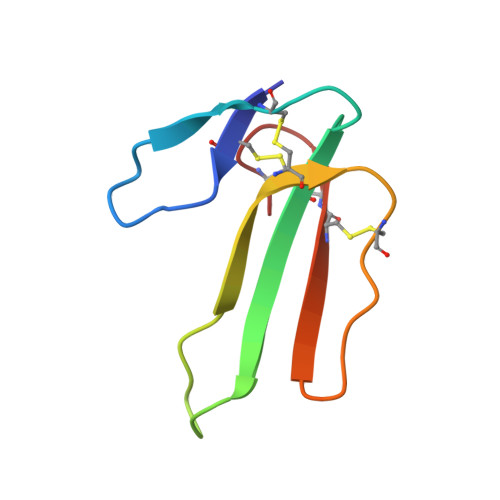Solution structure of cardiotoxin V from Naja naja atra.
Singhal, A.K., Chien, K.Y., Wu, W.G., Rule, G.S.(1993) Biochemistry 32: 8036-8044
- PubMed: 8347605
- DOI: https://doi.org/10.1021/bi00082a026
- Primary Citation of Related Structures:
1CVO - PubMed Abstract:
Cardiotoxins are small proteins that are found in the venoms of snakes from the Elapidae family. These toxins are known to bind to and disrupt the organization, integrity, and function of the cell membrane. Most of the well-studied cardiotoxins cause depolarization of membrane potentials and/or lysis of red cells. In contrast, CTX V from Naja naja atra displays poor hemolytic activity but is proficient at inducing aggregation and fusion of sphingomyelin vesicles [Chien et al. (1991) J. Biol. Chem. 266, 3252-3259]. To determine whether the unique activity of this CTX is attributable to its tertiary structure, the solution structure of CTX V was determined by NMR methods. On the basis of these studies, this cardiotoxin has the same general topology as other members of the family, and thus its unusual properties do not arise from any gross structural differences that are detectable by solution NMR methods. Molecular dynamics calculations indicate that residues 36-50 show concerted fluctuations. On the basis of sequence similarity, we postulate that residues 30-34 are important in determining the specificity of cardiotoxins for fusion versus lysis of vesicles.
- Department of Biochemistry, University of Virginia, Charlottesville 22908.
Organizational Affiliation:
















